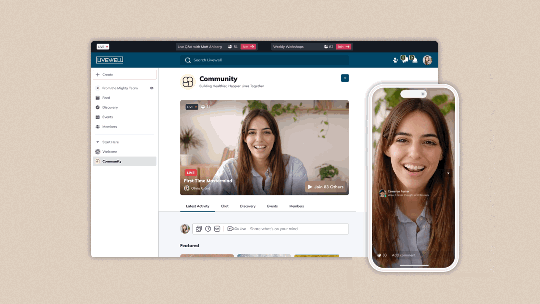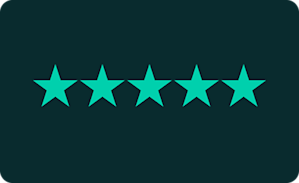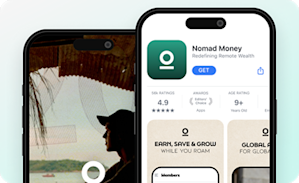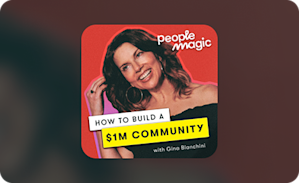Online Courses
How to Make Money Selling Courses Online
Wondering how to make money from your online courses? We’ve got a guide for you.
Author
Mighty Team
Last Updated
April 30, 2025

When we talked to Cristy “Code Red” Nickel about how she broke the $10 million mark with her online business, she told us about the difference it made having an amazing place to host her coaching and course business, not to mention that 12,500 members joined in the first 30 days!
Cristy’s experience with launching Code Red courses led to explosive growth for her brand.
Unfortunately, not all course creators experience this type of success. Despite the exploding online learning economy that’s projected to go to $1 trillion/year by 2030, course instructors are still struggling.
But it doesn’t have to be this way.
In this post, we’ll walk you through what it takes not just to create an online course, but to sell it successfully–and create a thriving course business.
We’ll cover:
The status of selling online courses
How to choose & validate your topic
Planning your course & picking software
Selling courses & building your business
Scaling your business and retaining students
You’ll be launching before you know it.
Try the platform with more $1 million courses and communities than any other.
Online courses – The reality
You’ve seen the ads. “Build a course! Earn money while you sleep!”
Let’s be honest about what an online course is and isn’t.
When done well, online courses are incredible, transformative experiences for both teachers and students. Students can learn knowledge that changes their lives, while teachers can earn from their expertise.
Amazing? Yes!
But there’s a dark side to selling online courses. The ease of access means there’s no end to coaches offering the moon. “Throw up an online course” “Earn limitless passive income.” “Quit your day job.”
And too many course creators are struggling with disappointment and low enrollment.
But we still believe in online courses. We see them change lives when done right–for both students and teachers.
Here’s why selling courses online is still an incredible business model:
Scalable income: Courses can be a lot of work–both to create and teach. And while they may offer “passive income,” it’s more important that they offer scalable income. You can multiply your students, impact, and revenue, but your effort does not multiply in equal proportion.
Monetize your knowledge: There are very few places online that pay you what your knowledge is worth. Try earning from YouTube ads or Patreon and you’ll see–the payout isn’t always worth it. Teaching courses can level the playing field.
More ways to teach: Online courses once meant an async video course. But there are more ways to teach now. For example, you could try cohort (livestreamed) courses, mixed live & async, small group, or pre-recorded courses with in-person learning events. The sky is the limit thanks to tech.
Flexible income: The term “side hustle” is now well known, but online teaching really can be a true side hustle. With easy-to-use tech and scalability, it’s possible to make some side income even working part time.
Ready-made tech: Online course platforms keep getting better all the time. Barriers to entry are lower than ever; course creators can focus on teaching, not tech.
Democratized learning: You can make learning accessible to anyone around the globe with a phone and an internet connection. This has the power to change lives.

How to sell courses online – Planning
1. Choosing a topic
It all starts with a topic, of course. Maybe you’ve got one in mind already. Maybe you don’t know where to start.
But let’s talk about how to choose a topic and validate it.
What is your advantage? There’s a lot of competition, that’s the bad news.
But the good news is that almost any course topic can work if done well. The thing is, with online courses your audience is worldwide. That opens up incredible market potential.
Just look at some of the examples of successful course businesses on Mighty:
In fact, the diversity of people in the world is exactly why there’s still room for course businesses. There’s no end to the cool things people want to teach and learn.
So start with this…
Start with what you know well. What do you have experience in? It doesn’t have to be “businessy” or “professional” sounding. Almost anything can make a great course.
Nerd out if you need to. Hobbies. Quirky knowledge. Even things you do a bit differently than other people (did we mention the thriving course business from an instructor who developed a cool journaling method?).
Organization skills. Parenting. Exercise. The workplace. Cooking. (We have a list of 235 online course ideas here.)
Your online course topic could be:
That thing people always ask you about.
That quirky thing you know how to do.
That office skill you’ve spent a lifetime perfecting.
That creative thing you do so well.
The thing you could talk about for 15 minutes, right now, with no notes.
It’s YOU. That’s where the magic comes from. And that’s where your topic should come from.
Close your eyes and think for 10 minutes. Most of us know instinctively, if we listen to ourselves, what we should be teaching.
2. Validating a topic
Okay, so it’s all well and good to have something you care about. That’s a good start. But can you build a business from it?
Let’s find out. Here are some clues you might be onto something.
Something like it exists: Originality is good, but you don’t need total originality. If there are thriving course businesses in your niche doing similar things, that might be a good sign people will pay for what you have.
But the market isn’t oversaturated. You still want to be able to find a unique selling point. If the market is flooded with courses just like yours, you might struggle more. But if you niche down and lean into your unique story and perspective, you can usually find a place to start.
People ask about it. If people are asking you for help or info, that’s a good start.
You’ve got a following. It’s not necessary to have a huge social media following to have a thriving course business. But if people know you for something (either online or offline), that could be a good clue.
If there are some clues you’re onto something, there’s one main thing you need to do.
Find an Ideal Member.
An Ideal Member is the person who needs the course you’re offering the most. Right now!
To understand more about the kind of people you want to attract to your course, think about what goals they’re looking to achieve, and what obstacles are holding them back from getting there.
What are they Googling about this topic?
Why can’t they find the answers?
And what can you teach them about this topic?
Understanding what your students look like, and why your course topic is important to them, is the key to delivering the results that they’re looking for. As such, visualizing your ideal participant lays the groundwork for you to sell courses online—especially if those courses are going to be successful.
It’s the simple principle that makes a course successful. When your course topic teaches one transformation to one type of person, you can succeed.
And one of the best ways to find an Ideal Member is to interview people. Talk to as many people as you can who might be interested in your course. Ask them questions like:
What type of transformation do you want?
What will be different 1 year from now if you get the results?
What are these results worth to you?
How do you best like to learn?
There’s no comparison here for validating a course. Listen closely, and adapt.
Validate like a marketing guru
Let’s drill even deeper into validation. Here are 5 more tips to be AS SURE AS YOU CAN BE that you’re onto something.
Study online marketplaces. Platforms like Skillshare and Coursera have lots of courses. Go read the stats and comments on courses in a similar niche to yours. What’s working? What do people want more of?
Create a wait list. If you have a following or email list, inviting people to join a wait list for a course can be a good hint.
Build a small offer. Before building a full course out, can you get people to pay for a smaller item in the same vein: say a short webinar or a digital download?
Pre-sell. People might tell you they love the idea, but until they pay for it it’s just talk. Pre-selling a course can validate that there’s actually a business here.
Analyze search and marketing trends. If people are searching Google for help doing what you do, it’s a good sign.
What winning course instructors have in common
We’ve seen thousands of course creators succeed. Here are a few common threads:
Authentic stories: Many successful course creators (not all) lead from a real, authentic story. And yes, we’re in an age of authenticity–where it seems everyone is trying to hack the authenticity algo.
Contrary to what you see on social media, here’s what authenticity is NOT:
Oversharing
Pics of your kids or pets (cute… but, come on!)
Forced crying vids (seriously?)
Real authenticity isn’t about faking anything. It’s about sharing enough of yourself in an honest way that people trust you. When you’re planning a course, your Ideal Member needs to trust you’re the person to help them get results. AND that you know what it feels like to be them, and to want what they want.
Be honest enough to show people they can trust you. No gimmicks.
Competitive advantage: Often, successful course creators’ competitive advantage is their hard-won knowledge and experience. When you lean into this, it limits your competition.
If you spend 20 years learning something well, your experience is more valuable. AND it’s harder to copy (even with AI).
Find a niche that you know you can bring some serious value to because of work you’ve already done.
In-demand transformation: Finally, a great course delivers a transformation. That’s the secret. Winning course instructors aren’t just the flashiest or the best speaking or the most knowledgeable. They can deliver a transformation. They give students exactly what they need.
And that’s what makes them succeed.

3. Planning an incredible course
Define the transformation
As we mentioned above, people pay for transformation. So what transformation are you selling? If you get this, your course can succeed. Miss it, and you’ll probably struggle.
This simple question will help you succeed:
What will be true of your students one year from now because they took your course?
That’s the transformation. For example, let’s say you want to teach guitar.
Your Ideal Member is not thinking, “Gee, I really wish I had 200 hours of guitar instruction videos to watch.” They’re thinking, “I’ve always wanted to play guitar at the campfire.”
Look at these dreams.
I want to surprise my spouse with my dance moves at our wedding.
I want to get the raise and earn what I’m worth.
I want to have beautiful scrapbooks of our family’s memories.
The dreams of your Ideal Members are your goals: what we call your Year in the Life. Where will they be in a year because they took your course?
Understand them. Listen when your Ideal Members talk. Give them what they want.
Work backwards
What do they need to learn to get to their transformation? Teach them that. Not more. Not less. It’s the secret for rave reviews.
You can work backwards from your Year in the Life. Plan the activities. The lessons. The structure of what they need to know.
And remember, learning isn’t just memorizing information. Give them chances to practice. Let them have feedback. Plan for them to meet other students. This is the secret to great educational experiences.
Create the path your Ideal Students will take to get to their Year in the Life.
At this point, you can structure your course. Resist the temptation to:
Use the course to show off how much you know
Stuff the course full of as much material as you can
Add in modules that don’t help your cause at all
Focus tightly on what your Ideal Students NEED, and get rid of everything else. The secret to a great course isn’t an avalanche of information – it’s giving the students exactly what they need to get the transformation they’re looking for.
Decide on a course format
Once you’ve got an idea of who the course is for, you can start to think about delivery. There are a lot of choices here that can seem overwhelming, but let’s keep it simple and talk about a few of the main ones.
Asynchronous vs. synchronous learning: These two big words basically just mean the following: Are you going to host your course live, in real-time, or are you going to pre-record the course and have people watch it after the fact? You can also choose to blend these by doing it live, keeping the recording up, and adding an online community for lots of engagement.
Delivery method: Video? Text? Audio? Some combination of all of these? Think about how you want to get the course material in front of your audience.
Outcomes: Think about what your course will lead to. We’ve already talked about how courses should lead to transformation. But what will your members have because they took the course? A portfolio? A credential or certificate? Or a new skill they can show off?
4. Choosing your online course platform
The next step to selling courses online? Choosing a robust online course platform where your course can thrive.
When it comes to choosing a course platform, there are three main ways to do this.
With plugins on a WordPress website: Course plugins like LearnDash or Memberful can add a course to your website. This model is quickly falling out of style since it takes numerous plugins to get a business up and running AND WordPress courses rarely look as nice as the alternatives.
By creating it on a course marketplace: A course marketplace has thousands of students on it already, and you simply add your course. Skillshare and Udemy are both examples of course marketplaces. They’re great in terms of getting your course in front of an existing audience, BUT there’s more competition PLUS these platforms will take a significant cut of your revenue (or, in Skillshare’s case, give you a small piece of their revenue pie).
By choosing an all-in-one course creator: This is the final – and we’d argue best – model for creating online courses. An all-in-one course + community platform gives you the space to create what you need to, but ideally, it comes out of the box with EVERYTHING you need to create a thriving course business.

Here are some of the things to look for in a course creator. These might not all be relevant, so watch for the ones that fit the course you envision.
Instruction tools
Content platform for the type of teaching you envision: videos, text, images, downloads, chat, etc.
Live meeting features for live instruction or office hours; think livestreaming, events, scheduling calendar integrations, and RSVPs.
Engagement features like challenges, gamification, rewards, and unlocks.
Evaluation tools like quizzes, questions, and certificates.
Course business tools
Landing and sales pages, checkout, multi-currency support, and different plans or bundles.
Branding features for making the course look your own, styles, logos, colors, and more customization
Analytics for understanding what’s working and what isn’t.
Apps and web apps so members can access your course anywhere.
Course community tools
Community platform for creating an online community to help your students make connections & network
Membership tools like chat, messaging, and profiles
Content tools like forums, posting, long-form, or video hosting
Online event tools: like meeting functions, event pages, and RSVPs
These are the features you can look for. And you can get all these in a single platform.
Good course platforms should let you try before you buy. It’s important to feel good about the software you choose.
Here's a quick summary of some of the best options for selling online courses.
Best Features | Use For | Starting From | |
|---|---|---|---|
1. Mighty Networks | Live & Async Courses, Community, Built-in Events + Livestreams | Courses + Community | $109/mo |
2. Kajabi | Async Courses & Funnels | Pre-Recorded Courses & Basic Discussions | $149/mo |
3. Thinkific | Async Courses & WordPress Integration | Online Courses & Digital Products | $49/mo |
4. Udemy | Course Marketplace | Built-in Audience for Courses | Udemy Takes Up to 67% of Revenue |
5. Settle on a Price
A lot of people create and sell courses online that deliver results and transformation to their ideal participants. And they undercharge for it.
There’s no exact science to figuring out how much you should charge when you’re selling courses online. But if you can figure out how valuable your course content is to your ideal members, you can settle on a price that reflects that value. Ask yourself a few questions:
Without your program, how else would your ideal student get results?
If your Ideal Member were able to build a new practice and get the results you offer, what could it mean to them?
What price would make it worth it to you?
You’ve created a course that helps participants achieve a goal that they couldn’t get to on their own. And there’s a lot of value in that. So much so that you can and should price your online course at what it’s worth (which is probably more money than you’re comfortable with).
Here are some other questions around pricing to consider:
Is the course sold by itself or bundled with something else? (ie. a membership)
Will it be a one-time or recurring payment?
What price point would make members pay attention and push to succeed?
What price point would help you build a thriving business? (Even if you don’t sell millions.)
All this is great.
But let’s simplify this into one overarching question.
What is the course result worth to your Ideal Student?
Learning to ballroom dance? That’s worth something. Learning to ballroom dance to surprise your spouse at your wedding in 4 months? That’s a seriously valuable result!
Learning to network? That’s valuable. Learning to network your way into the C-Suite this year?
That’s VALUABLE!
That’s the value that should dictate your pricing.
6. Pre-sell your course (bonus tip)
Here’s a bonus tip for how to sell courses online. It works especially well if you have an existing following, but could work for anyone.
Pre-sell the course.
When you start telling people you want to create a course, a lot of them might say, “Yeah, that’s a great idea!”
Too many creators have seen this enthusiasm dry up when it turns into actually pulling out their credit cards to pay for the course.
One great way around this is to pre-sell the course. And you can pre-sell the course before you even create it!
You need a great course landing page, course title, and payment system. Then, invite your potential students to pre-purchase, even at a discount. It will give you an actual gauge of whether or not people will buy the course.
If you get the reaction you wanted, build it!
Course Name Generator
Ready for a course that changes lives? It all starts with a great name. This generator is powered by Mighty Co-Host™ and can create endless suggestions.
The magic starts with a few words about your course. What you teach. Why you teach it. Give us a prompt about your passion or your story and we'll get to work!
The names generated by Mighty Co-Host™ are examples only and may be used by other businesses or subject to third-party rights. For more information, check our Terms
How to sell online courses - Building & launching
7. Choose the right gear
So if you’ve done the background work to prepare for your course, and you’re ready to build, you’ll probably find yourself down the rabbit hole of picking all the right course gear.
So if you’re currently sitting with $5,000 of camera gear in an Amazon cart, let us set your mind at ease.
You don’t need complicated equipment to create an amazing course. Here’s what you might need:
Camera: If you have a pro camera, that’s great. But a webcam or your phone will work just fine. Try sitting in front of a window, with your face to the glass and the camera pointing back into the room. It’s a great way to get good video without the high cost. If you have a bit to invest or don’t like the idea of sitting in a window, you can always buy a ring light or more affordable key light to improve your video.
Audio: Audio is more important than video. So don’t just sit and talk towards your phone or laptop mic. Instead, at the very least, plug in a headset or earbuds to pick up your voice close to your mouth. If you want to invest a bit more, try a lapel or desktop condenser mic for better sound quality. There are lots of programs now that will master your voice with AI, for podcast-quality sound.
Editing Software: You don’t necessarily need to edit your course, especially if you deliver it live (obviously). But, if you want it pre-recorded and a bit more polished, you might choose to edit it. You can use a pro editing software like Adobe Premiere, or one of the many cheap or free versions online or hire a video editor to edit it for you.
8. Market it
At some point in the process, you need to market your course. You can do this before you get started (e.g. if you’re pre-selling). But there’s a good chance you may need to start marketing as you build and prepare for launch.
Again, we have a whole guide to how to market an online course, and it’s hard to do this justice here.
But here are a couple of marketing ideas to help you sell your online course:
If you already have a following, start with that existing audience, and use whatever tools you have at your disposal. Have an email list? Start an email campaign. Have a ton of social media followers? Post regularly about your new venture. Make sure everyone knows that you’re selling an online course, who it’s for, and why it’s unique.
If you don’t have a following in place, you can still get the word out that you’re selling courses online. Reach out to your professional and personal networks via email, text, and over the phone to tell them what you’re doing. Ask for referrals. Tell everyone what you’re building, and who it’s for. You could also create a webinar to help introduce yourself and the course you’re selling. You might even give your audience a sneak preview of the course itself.
9. Deliver it!
When all is said and done, all that’s left is to deliver the course. If you’re creating a pre-recorded course, you might be sitting in your office for a few days recording. If you’re delivering a live course, you might be sending out links and RSVPs, and spending time with a crew of great people on a Saturday.
The delivery is up to you! So have fun with it!
10. Ask for feedback
After delivery, don’t forget to ask for feedback on your course. You can use this to make your course better in the future, which is great. But you can also collect testimonials, which are vital for online courses. These are super important to help you sell more courses in the future, and if you can add a name and a face to the testimonials (if your students are comfortable), even better!
How to Sell Online Courses — Growing your course business
11. Scale your online course business
Some people try to scale too early. It’s best to think about scale once you’ve done 1 thing well. Don’t try to launch 4 courses at once. Don’t try to launch 4 parts of a business at once.
Build and master the art of giving people a transformation.
But once you’ve done that, how do you scale?
Here are some of the things we’ve noticed:
Scale often comes from your existing members: It’s natural to look outside of your business. Maybe there are new markets you need to tap! Maybe. But we find the most predictable way to scale is with the members you already have. Create a new offer. An add-on. A membership or live event. These are the things that scale.
Keep it related. Scale often comes from expanding your offerings, without switching to new things. Find things that complement your existing offers without going off on tangents.
Scale with software: It might seem obvious, but scaling means scaling–not doing twice as much work. For example, if your course is an intensive, in-person experience that your teach, you might need to use tech to scale this to save time.

12. Retention
Some online courses are made to do once, then students ride into the sunset–hopefully happy and transformed.
But for a long-term course business, you need to figure out retention. The best way to do this is to take your best and happiest customers and offer them more.
It might be:
The next thing they need to learn.
A group or membership to keep them accountable.
A more in-depth look or an advanced class.
Another opportunity to experience the community and camaraderie they felt in class: e.g. a community or events.
By finding new transformations to offer your happiest students, you can turn an online course into a long-term relationship.
Ready to sell your course online?
The platform we’ve created to bring courses and community together is Mighty Networks. It lets you sell courses online, build a course community, and charge for your courses all in one place.
With Mighty Networks, you also get:
The tools to easily create and organize lessons and dynamic course content
The ability to charge for courses and collect payments securely in multiple currencies
Access to Zapier, for easy integration with your website, your CRM, your email and more
Multiple ways to connect your students, from polls to direct messaging
Live streaming and community events built in
The ability to sell bundles
Access to your course and community on the web, iOS, and Android
Are you ready to create an online course?
Ready to start building your community?
Start a free 14-day trial to explore Mighty—no credit card required.
More like this
Join Mighty Community
Learn the principles of Community Design™ (and see them in action) alongside thousands of creators and entrepreneurs. It's free to join!

Online Courses
Creating a Course
Teaching a Course
Course Platforms
Selling a Course
Communities & Memberships
Community Platforms
Managing a Community
Building a Community
Growing a Community
Monetizing a Community
Content Creation
Creators & Entrepreneurs
Monetization
Content Creation
Starting a Business
Website Builders
Creating & Managing a Website
Events
Event Platforms
Hosting & Marketing Events
Branded Apps
Creating a Mobile App
Coaching Apps
Community Apps
Coaching
Mastermind Groups
Starting a Coaching Business
Coaching Platforms
Filter by Category
Online Courses
Communities & Memberships
Creators & Entrepreneurs
Events
Branded Apps
Coaching
Build a $1 Million Community
This free masterclass went viral—sign up to learn why.

























